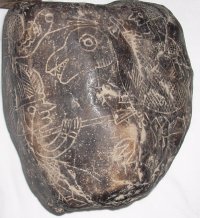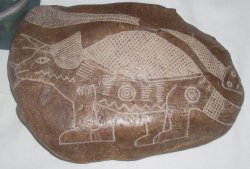The following is from on a continuing
discussion about evolution arising from a post dated July 1, 2006.
The comment showing there are scientific fields producing evidence for evolution was:
"Comparative Anatomy: This shows the same skeletal elements in the forelimbs of humans, cats, whales, and bats, showing that all have some common ancestry. This is only one small example in this field."You may be speaking about "convergent evolution" or about the theory of "homology." Both need to be discussed together.
Convergent evolution is when species without a close common ancestor have different looking structures which perform similar functions. The wings of a fly and the wings of a bird would be an example of this. Thus if living things have parts that function the same, but have different structures, it is a proof for evolution.
Homology states that, if there is the possibility of close common ancestor, similarities in structure are due to common ancestory. Similar looking structures evolved to accomplished very different tasks. Thus, if living things have parts that function differently, but have the same structures, it is proof for evolution. This is the option I believe you are talking about.
If we look at the complete picture, what we have is: that if things look the same, it is evidence for evolution. And if things look different, it is evidence for evolution. The problem is that the assumption that evolution is true underlies the conclusions.
If the initial assumption that evolution is true is removed (as should be done for a true scientific investigation) there is a third theory. That biological structures are similar because they were created by a common designer.
So which of these three, or combination of them, has evidence to support it?
If convergent evolution is true, then we should find lots of living things (and fossils of living things) with intermediate stages showing the evolution of stuctures as the environment forces them to change.
If homology is true, then we should find lots of living things (and fossils of living things) with intermediate stages leading back to a common ancestor.
If a common designer made all things, we should see similar structures in various living things. There would be no evidence of intermediate structures. If two living things performed similar functions, but were radically different (flies and birds) we could expect to see different structures. Again there would be no evidence of intermediate structures.
When we look at reality, what do we see? Stasis. We see living things with no evidence of the required change. We do see natural selection. For example, there is evidence that all dogs came from a common ancestor, a wolf. But dogs always create more dogs, nothing else. And the structure of dogs shows no sign of the changes required for convergent evolutiuon or homology. The observable evidence, what we can see and measure (reality), favors a common creator. Comparative anatomy provides evidence for a common creator, not for evolution.
Labels: creation, Darwinsim, evolution



